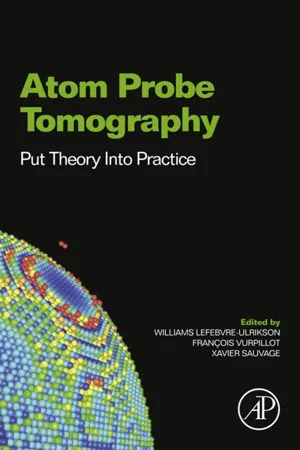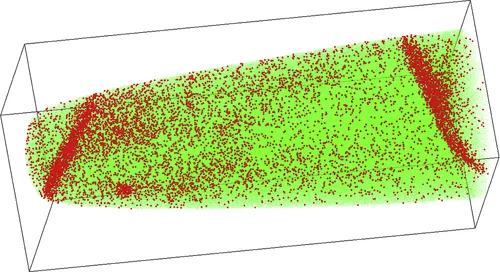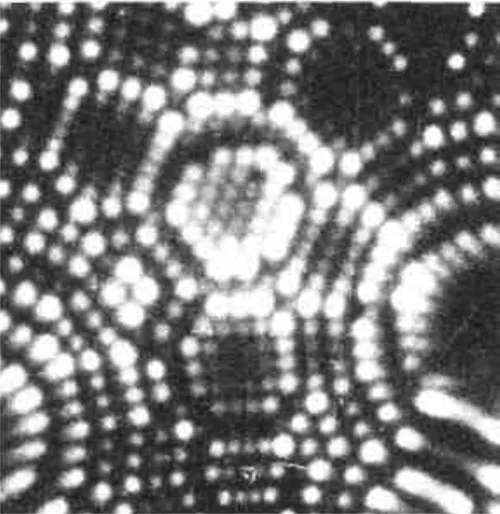
eBook - ePub
Atom Probe Tomography
Put Theory Into Practice
- 416 pages
- English
- ePUB (mobile friendly)
- Available on iOS & Android
eBook - ePub
About this book
Atom Probe Tomography is aimed at beginners and researchers interested in expanding their expertise in this area. It provides the theoretical background and practical information necessary to investigate how materials work using atom probe microscopy techniques, and includes detailed explanations of the fundamentals, the instrumentation, contemporary specimen preparation techniques, and experimental details, as well as an overview of the results that can be obtained. The book emphasizes processes for assessing data quality and the proper implementation of advanced data mining algorithms.
For those more experienced in the technique, this book will serve as a single comprehensive source of indispensable reference information, tables, and techniques. Both beginner and expert will value the way the book is set out in the context of materials science and engineering. In addition, its references to key research outcomes based upon the training program held at the University of Rouen—one of the leading scientific research centers exploring the various aspects of the instrument—will further enhance understanding and the learning process.
- Provides an introduction to the capabilities and limitations of atom probe tomography when analyzing materials
- Written for both experienced researchers and new users
- Includes exercises, along with corrections, for users to practice the techniques discussed
- Contains coverage of more advanced and less widespread techniques, such as correlative APT and STEM microscopy
Frequently asked questions
Yes, you can cancel anytime from the Subscription tab in your account settings on the Perlego website. Your subscription will stay active until the end of your current billing period. Learn how to cancel your subscription.
No, books cannot be downloaded as external files, such as PDFs, for use outside of Perlego. However, you can download books within the Perlego app for offline reading on mobile or tablet. Learn more here.
Perlego offers two plans: Essential and Complete
- Essential is ideal for learners and professionals who enjoy exploring a wide range of subjects. Access the Essential Library with 800,000+ trusted titles and best-sellers across business, personal growth, and the humanities. Includes unlimited reading time and Standard Read Aloud voice.
- Complete: Perfect for advanced learners and researchers needing full, unrestricted access. Unlock 1.4M+ books across hundreds of subjects, including academic and specialized titles. The Complete Plan also includes advanced features like Premium Read Aloud and Research Assistant.
We are an online textbook subscription service, where you can get access to an entire online library for less than the price of a single book per month. With over 1 million books across 1000+ topics, we’ve got you covered! Learn more here.
Look out for the read-aloud symbol on your next book to see if you can listen to it. The read-aloud tool reads text aloud for you, highlighting the text as it is being read. You can pause it, speed it up and slow it down. Learn more here.
Yes! You can use the Perlego app on both iOS or Android devices to read anytime, anywhere — even offline. Perfect for commutes or when you’re on the go.
Please note we cannot support devices running on iOS 13 and Android 7 or earlier. Learn more about using the app.
Please note we cannot support devices running on iOS 13 and Android 7 or earlier. Learn more about using the app.
Yes, you can access Atom Probe Tomography by Williams Lefebvre,Francois Vurpillot,Xavier Sauvage in PDF and/or ePUB format, as well as other popular books in Physical Sciences & Physical & Theoretical Chemistry. We have over one million books available in our catalogue for you to explore.
Information
Chapter One
Early Developments and Basic Concepts
D. Blavette, and X. Sauvage Groupe de Physique des Matériaux, University and INSA of Rouen, Normandie University, France
Abstract
Since the 1990s, atom probe tomography (APT) technique has reached a recognized position among the most important analytical microscopy techniques. APT is able to map out the spatial distribution of atomic species in three dimensions. With a unique combination of chemical sensitivity and three dimensional capabilities with a spatial resolution near the atomic scale it provides unique information about nanoscale structures. In this introduction chapter, the overall fundamentals and performances of APT, its main fields of application in material science, the historical background, and modern challenges are briefly described.
Keywords
Application; Atom probe; Concepts; Development; HistoryIntroduction
Since the 1990s, atom probe tomography (APT) technique has reached a recognized position among the most important analytical microscopy techniques. APT is able to map out the spatial distribution of atomic species in three dimensions (3D). With a unique combination of chemical sensitivity and 3D capabilities with a spatial resolution near the atomic scale it provides unique information about nanoscale structures. In this introduction chapter, the overall fundamentals and performances of APT, its main fields of application in material science, the historical background, and modern challenges are briefly described.
Atom Probe Tomography in Materials Science Today
The Unique Information Provided by Atom Probe Tomography
Imaging materials in 3D at the atomic scale has not only been a dream but also a challenge. This has been of vital importance for fundamental researches dealing with phase transformations or segregation of solute atoms to lattice defects. The characterization of microstructures at the ultimate scale is also of great importance for materials of industrial importance as it enables to better control the genesis and development of microstructures and to optimize processing routes and properties. Both functional and mechanical properties of materials depend not only on microscale features like grain sizes, precipitates, but also on nanoscale features such as clusters of solutes, chemical gradients, nanoprecipitates, and segregations on structural defects.
Scanning electron microscopes (SEM) have high imaging resolutions down to about 10 nm thanks to Field Emission Gun but their analytical capability based on X-ray emission is, however, still limited. This is the result of the scattering of electrons in matter that gives rise to a significant spread of the signal up to about 1 μm. This limitation can be easily overcome in the transmission electron microscope (TEM) or scanning-TEM where the sample thickness is typically less than 100 nm. In TEM, the limitation of the spatial resolution comes mainly from the aberrations of lenses used to focus the electron beam. During the past 10 years, the implementation of spherical aberration correctors in commercial instruments pushed the routine analytical capability of TEMs down to the atomic scale [1]. However, the chemical sensitivity of analytical TEM, based on electron energy loss spectroscopy or energy dispersive X-ray spectroscopy is typically limited to about one atomic percent in routine experiments. Besides, data and images are provided through the projection in two dimensions across the electron-transparent sample and part of the 3D information might be lost. Recent developments in TEM tomography [2] make it also possible to access part of this 3D information but hardly with a near-atomic scale resolution. Secondary ion mass spectroscopy overcomes electron microscopy techniques for the chemical sensitivity by several orders of magnitude (Fig. 1.1) but at the expense of the spatial resolution as the imaging capability is typically limited by a resolution of about 50 nm [3].

Figure 1.1 Range of routine spatial precision in two-dimensional (2D) or three-dimensional (3D) imaging mode and chemical sensitivity of major analytical microscopy techniques showing that the atom probe tomography (APT) combines near-atomic resolution with sensitivity close to few atomic parts per million. EDS, Energy dispersive X-ray spectroscopy; EELS, electron energy loss spectroscopy; SEM, scanning electron microscopy; SIMS, secondary ion mass spectroscopy; STEM, scanning transmission electron microscope.
In the landscape of analytical microscopy (Fig. 1.1), APT exhibits unique capabilities: it combines 3D information, near-atomic resolution (0.1 nm in depth <1 nm at the sample surface) with a chemical sensitivity down to a few atomic parts per million in the best cases. The typical analyzed volumes are 50 × 50 × 200 nm3 (Fig. 1.2). Compared to TEM, APT is certainly less versatile. First, it is a destructive technique. Measurements cannot be repeated on the same sample. It is also difficult to relate the chemical information to structure. Besides, the field of view or the region of interest is more limited. However, the unique capabilities of APT to investigate materials in 3D at a near-atomic scale, including semiconductors and oxides, have been leading to a growing community both in the academic world and industry.
Fields of Application
Field ion microscopy (FIM), invented by E.W. Müller in the early 1950s, can be viewed as the precursor of modern APT. Both are based on high electric fields. It has provided major contributions in surface science and physical metallurgy thanks to its atomic-scale resolution (Fig. 1.3). As early as the 1960s it has been used to image crystalline defects like grain boundaries (GBs) [4] or vacancies [5]. Phase contrast also made it possible to investigate at least qualitatively precipitation, voids, irradiation defects, segregation to lattice defects or surface diffusion, or reactions in metallic alloys [6].

Figure 1.2 Three-dimensional reconstruction of a volume analyzed by atom probe tomography in a steel showing both the carbon segregation to grain boundaries (two are displayed) and a nanoscale carbide [Fe, green; C, red; 45 × 45 × 120 nm3].

Figure 1.3 Field ion microscopy image of the surface of a PtAu alloy. Each dot is the image of a single atom. The intersection of crystalline atomic planes with the hemispherical surface of the sample gives rise to the specific ring contrast. With courtesy of C. Martin, GPM, France.
The early applications of atom probe in the 1970s were mainly limited to good conductors of electricity, that is, metallic alloys. Metallic glasses [7],...
Table of contents
- Cover image
- Title page
- Table of Contents
- Copyright
- Contributors
- Preface
- List of Abbreviations
- Chapter One. Early Developments and Basic Concepts
- Chapter Two. Field Ion Emission Mechanisms
- Chapter Three. Basics of Field Ion Microscopy
- Chapter Four. Atom Probe Sample Preparation
- Chapter Five. Time-of-Flight Mass Spectrometry and Composition Measurements
- Chapter Six. Atom Probe Tomography: Detector Issues and Technology
- Chapter Seven. Three-Dimensional Reconstruction in Atom Probe Tomography: Basics and Advanced Approaches
- Chapter Eight. Laser-Assisted Field Evaporation
- Chapter Nine. Data Mining
- Chapter Ten. Correlative Microscopy by (Scanning) Transmission Electron Microscopy and Atom Probe Tomography
- Chapter Eleven. Combining Atom Probe Tomography and Optical Spectroscopy
- Appendix A
- Appendix B
- Index